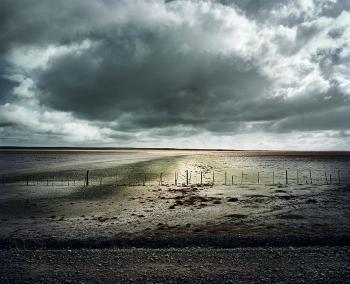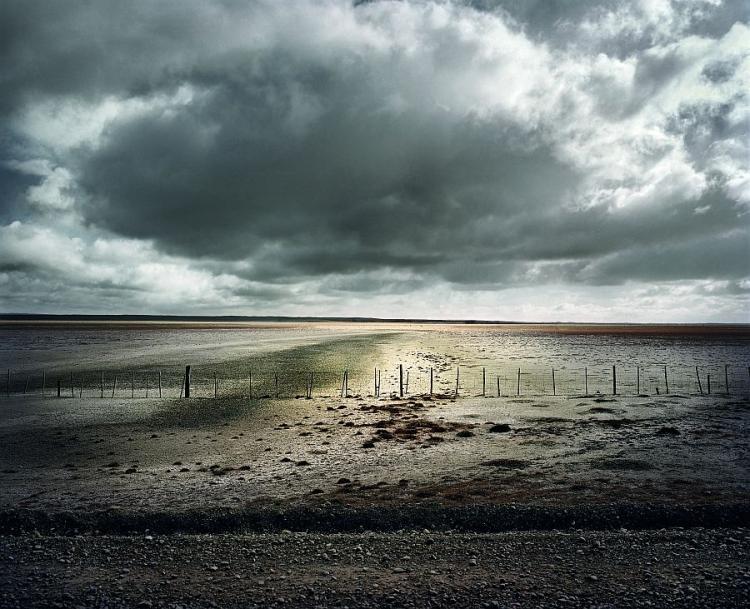“My Wild Places” is a fascinating collection of images by Luca Campigotto, an Italian photographer who has traveled the world documenting unusual and at times stark images of what he refers to as “wild places.”
Born in Venice, Campigotto’s previous works showcase his love of and training in landscape photography. His biographical works show us the beauty of his home country. This is shown specifically in his work “Venicexposed,” published in 2006.
But in this new book—with brief narratives describing some of the photos—Campigotto moves away from the beauty and familiar scenes one expects to see in Venice or other “known” European scenes and into a “wild” world.
He calls them “my” wild places. It is difficult to tell what some scenes are or where they were filmed.
This is travel photography at its most extreme—from one end of the earth to the other, from deserts in Chile to Cairo to India to Lapland. It will take more than one sitting reviewing this book to fully capture the meaning behind the photos and what he is trying to accomplish. The photographs are not in any particular order or geographic setting. He switches from color to black and white and you find yourself returning to a particular photo and seeing it from a completely different angle than the first time.
One of the photos that stir your mind and capture your imagination is the black and white photo of the El Tatio Geysers in the Atacama Desert in Chile. At first you’re not sure if you’re seeing a group of small fires, or volcanic ashes rising up. But finally, after you read the captions in the back of the book, you can see that they are similar to the geysers in Yellowstone Park—but in a much more stark landscape.
A few pages away is a shot of the Atacama Desert in beautiful color showing a pool of water. The clouds are so low to the ground that it appears there is no sky—just land and clouds.
And then you are suddenly transported to the Towers of Silence in Yao, Iran—and you can see a scarred landscape of a mountainous area with ancient-looking stone buildings carved into the side of a mountain. But suddenly, looking more closely—you notice a number of people riding on motorized dirt bikes up and down the landscape.
In Turkey you can see ancient ruins of cliff dwellings. Rising above these in the sky are hot air balloons looking down on the desolate scene below.
In Pasubio, Italy are treacherous looking roads called the Road of Heroes carved along the side of rising mountains.
Then you suddenly find yourself back in Argentina looking at the Petro Moreno Glacier with majestic mountains in the background and slight touches of color in an otherwise stark landscape.
Then skeletons of huge ships and tankers wrecked on the shores of Chile or islands in the Pacific. The images are in no particular order—just a chronicle of completely wild and unfamiliar places.
The author says “taking photographs means building memories, and looking at photographs means looking for oneself in the past.” He says that photographs are illusions and that looking at them brings us the nostalgia of remembering what we have seen and done —or even the things that we have only dreamed of.
He considers himself a “collector of places, or rather, of ideas of places.” And this fascinating, challenging book does that—it takes us to places we have never seen but makes us think about each one and how they relate to us and our own memories.
Born in Venice, Campigotto’s previous works showcase his love of and training in landscape photography. His biographical works show us the beauty of his home country. This is shown specifically in his work “Venicexposed,” published in 2006.
But in this new book—with brief narratives describing some of the photos—Campigotto moves away from the beauty and familiar scenes one expects to see in Venice or other “known” European scenes and into a “wild” world.
He calls them “my” wild places. It is difficult to tell what some scenes are or where they were filmed.
This is travel photography at its most extreme—from one end of the earth to the other, from deserts in Chile to Cairo to India to Lapland. It will take more than one sitting reviewing this book to fully capture the meaning behind the photos and what he is trying to accomplish. The photographs are not in any particular order or geographic setting. He switches from color to black and white and you find yourself returning to a particular photo and seeing it from a completely different angle than the first time.
One of the photos that stir your mind and capture your imagination is the black and white photo of the El Tatio Geysers in the Atacama Desert in Chile. At first you’re not sure if you’re seeing a group of small fires, or volcanic ashes rising up. But finally, after you read the captions in the back of the book, you can see that they are similar to the geysers in Yellowstone Park—but in a much more stark landscape.
A few pages away is a shot of the Atacama Desert in beautiful color showing a pool of water. The clouds are so low to the ground that it appears there is no sky—just land and clouds.
And then you are suddenly transported to the Towers of Silence in Yao, Iran—and you can see a scarred landscape of a mountainous area with ancient-looking stone buildings carved into the side of a mountain. But suddenly, looking more closely—you notice a number of people riding on motorized dirt bikes up and down the landscape.
In Turkey you can see ancient ruins of cliff dwellings. Rising above these in the sky are hot air balloons looking down on the desolate scene below.
In Pasubio, Italy are treacherous looking roads called the Road of Heroes carved along the side of rising mountains.
Then you suddenly find yourself back in Argentina looking at the Petro Moreno Glacier with majestic mountains in the background and slight touches of color in an otherwise stark landscape.
Then skeletons of huge ships and tankers wrecked on the shores of Chile or islands in the Pacific. The images are in no particular order—just a chronicle of completely wild and unfamiliar places.
The author says “taking photographs means building memories, and looking at photographs means looking for oneself in the past.” He says that photographs are illusions and that looking at them brings us the nostalgia of remembering what we have seen and done —or even the things that we have only dreamed of.
He considers himself a “collector of places, or rather, of ideas of places.” And this fascinating, challenging book does that—it takes us to places we have never seen but makes us think about each one and how they relate to us and our own memories.






